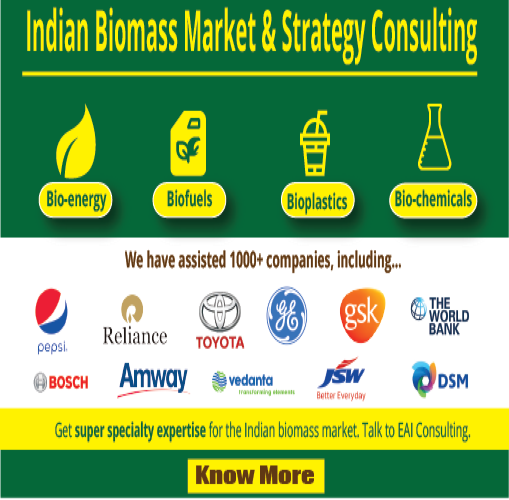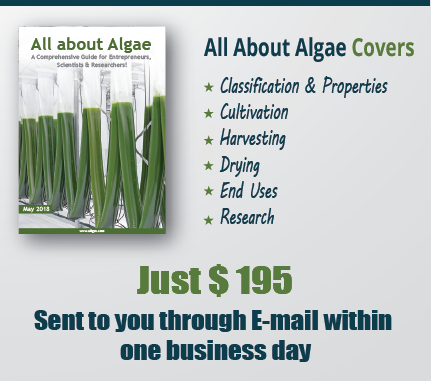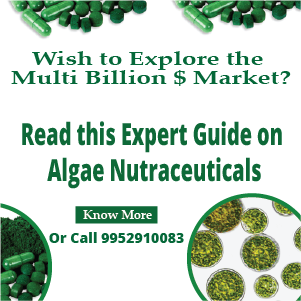Animal & Fish Feed
About five decades ago, the mass production of certain protein-rich micro-algae was considered as a possibility to close the predicted so called “protein gap”. Comprehensive analyses and nutritional studies have demonstrated that these algal proteins are of high quality and comparable to conventional vegetable proteins. However, due to high production costs as well as technical difficulties to incorporate the algal material into palatable food preparations, the propagation of algal protein is still in its infancy.
Aquaculture
Micro-algae are an essential food source in the rearing of all stages of marine bivalve molluscs (clams, oysters, and scallops), the larval stages of some marine gastropods (abalone, conch), larvae of several marine fish species and penaeid shrimp, and zooplankton.
Microalgae are used as essential live feeds and supplements in the aquaculture of larval and juvenile animals including oyster spat, juvenile abalone, finfish larvae and rotifer.
The effects of the presence of micro-algae in the larval rearing tank are still not fully understood and include:
- stabilizing the water quality in static rearing systems (remove metabolic by-products, produce oxygen),
- a direct food source through active uptake by the larvae with the polysaccharides present in the algal cell walls possibly stimulating the non-specific immune system in the larvae,
- an indirect source of nutrients for fish larvae through the live feed (i.e. by maintaining the nutritional value of the live prey organisms in the tank),
- increasing feeding incidence by enhancing visual contrast and light dispersion, and
- microbial control by algal exudates in tank water and/or larval gut.
Shrimp Feed
- Pavlova is a small golden/brown flagellate that is very similar to Isochrysis. It has a very high DHA profile and is excellent for enriching rotifers and other zooplankton.
- Tetraselmis is a large green flagellate with a very high lipid level. It also contains natural amino acids that stimulate feeding in marine animals. It is an excellent feed for larval shrimp.
- Nannochloropsis is a small green alga that is extensively used in the aquaculture industry for growing small zooplankton such as rotifers and for Greenwater. It is also used in reef tanks for feeding corals and other filter feeders.
- Isochrysis is a small golden/brown flagellate that is very commonly used in the aquaculture industry. It is high in DHA and often used to enrich zooplankton such as rotifers or Artemia.
- Thalassiosira weissflogii is a large diatom that is used in the shrimp and shellfish larviculture industry. This alga is considered by several hatcheries to be the single best algae for larval shrimp.
Shellfish Diet
Shellfish Diet 1800® is a mix of five marine microalgae that all have demonstrated success with a variety of shellfish including oysters, clams, mussels, and scallops. A mixed diet provides a much better nutritional profile for all types of shellfish, increasing both growth rates and survival.
Shellfish Diet can be used with pre-set larvae all the way up through broodstock and will typically perform as well as live algae so it can be used as a complete live algae replacement.
Marine Fish Larvae Cultivation
Apart from the requirement for micro-algae for culturing and/or enriching live prey organisms such as Artemia and rotifers, algae are often used directly in the tanks for rearing marine fish larvae. This “green water technique” is part of the commonly applied techniques for rearing larvae of gilthead seabream Sparus aurata (Isochrysis sp., Chlorella), milkfish Chanos chanos (Chlorella), Mahimahi Coryphaena hippurus (Chaetoceros gracilis, Tetraselmis chui, or Chlorella sp.), halibut Hippoglossus hippoglossus (Tetraselmis sp.), and turbot Scophthalmus maximus (Tetraselmis sp. or I. galbana).
Many bivalve hatcheries increase larval production by including an algal culture operation within the facility. Vats of dense algae provide mollusc larvae with a nutritious diet. The high quality diet accelerates growth and shortens the time to larval settlement or spat set. Production of algae in large amounts (mass cultures) is accomplished by providing a favorable environment for the species being cultured.
Livestock Feed
Algae Suspension for Livestock Production - Although the mechanism has not been understood yet, algal suspension appeared to improve the balance of nutrients in a straw-based diet and thus increased the efficiency of conversion of feed to products. Nitrogen deficient straw being the main source of nutrients for ruminants in Bangladesh (Tareque and Saadullah 1988), the introduction of algal suspension in the feeding system would certainly help economic livestock production. Many livestock farmers, particularly in the urban and suburban areas, raise their animals absolutely on straw and concentrate with either very little or no green grasses. This system of feeding is often associated with infertility, night blindness or even total blindness or other symptoms of vitamin A deficiency. Algae are a very rich source of carotene and algal suspension could be a potential source of vitamin A to combat such deficiencies.
Chlorella as Livestock Feed - In 1924, the German scientists Garder and Uitsh noted the key necessity of Chlorella industrial cultivation for the production of feed additives.
H. Nakamura (1961) showed that Chlorella was digested much more easily in the form of paste. He recommended up to 5 percent in the daily diet. Chlorella protein digestibility for pigs was 56 %. The average daily weight gain of pigs doubled due to the use of Chlorella paste. Similarly, trials have found that use of Chlorella resulted in weight gain for sheep. It has also been found that the use of Chlorella as a feed additive could become the best choice for solving problems associated with the use of antibiotics, organic acids, or other ingredients in feed because microalgae contain natural organic acids, reducing the colonization of pathogens.
Algae may be an inexpensive way to harvest proteins in developing countries where farmland is scarce.
Market Size
The global animal feed market is worth about $20 billion, with a CAGR of 3-4%. The size of the worldwide fishmeal market is much smaller than that for animal feed. Fishmeal is however a premium market when compared to animal feed, with prices of fishmeal per T being about three times that for animal feed ($1200/T vs $300/T for animal feed) (http://www.thefishsite.com/articles/552/fish-and-fishery-products-a-global-market-analysis
Prominent Companies Producing Microalgae Feed Additives
- Cyanotech produces products from microalgae grown at its 90-acre facility in Hawaii, United States, using patented and proprietary technology and distributes them to nutritional supplement, nutraceutical, cosmeceutical, and animal feed makers and marketers in more than 40 countries worldwide.
- Ingrepro BV - Ingrepro turns algae into dozens of products, from horse feed to weed killer for golf courses. As a food additive for humans, it is a source of healthy omega-3 fatty acids.
- Sun Chlorella - Established in 1969, Sun Chlorella has 32 corporate offices located throughout Japan, the U.S., Europe and Asia, reaching customers worldwide with Microalgae nutrition products.
|
Click Here to Know More |
|
|
Poly unsaturated fatty acids(DHA,ARA,GAL and EPA) Aquaculture Feed (Shrimp feed, Shellfish Feed, Marine Fish Larve cultivation ) |
|



